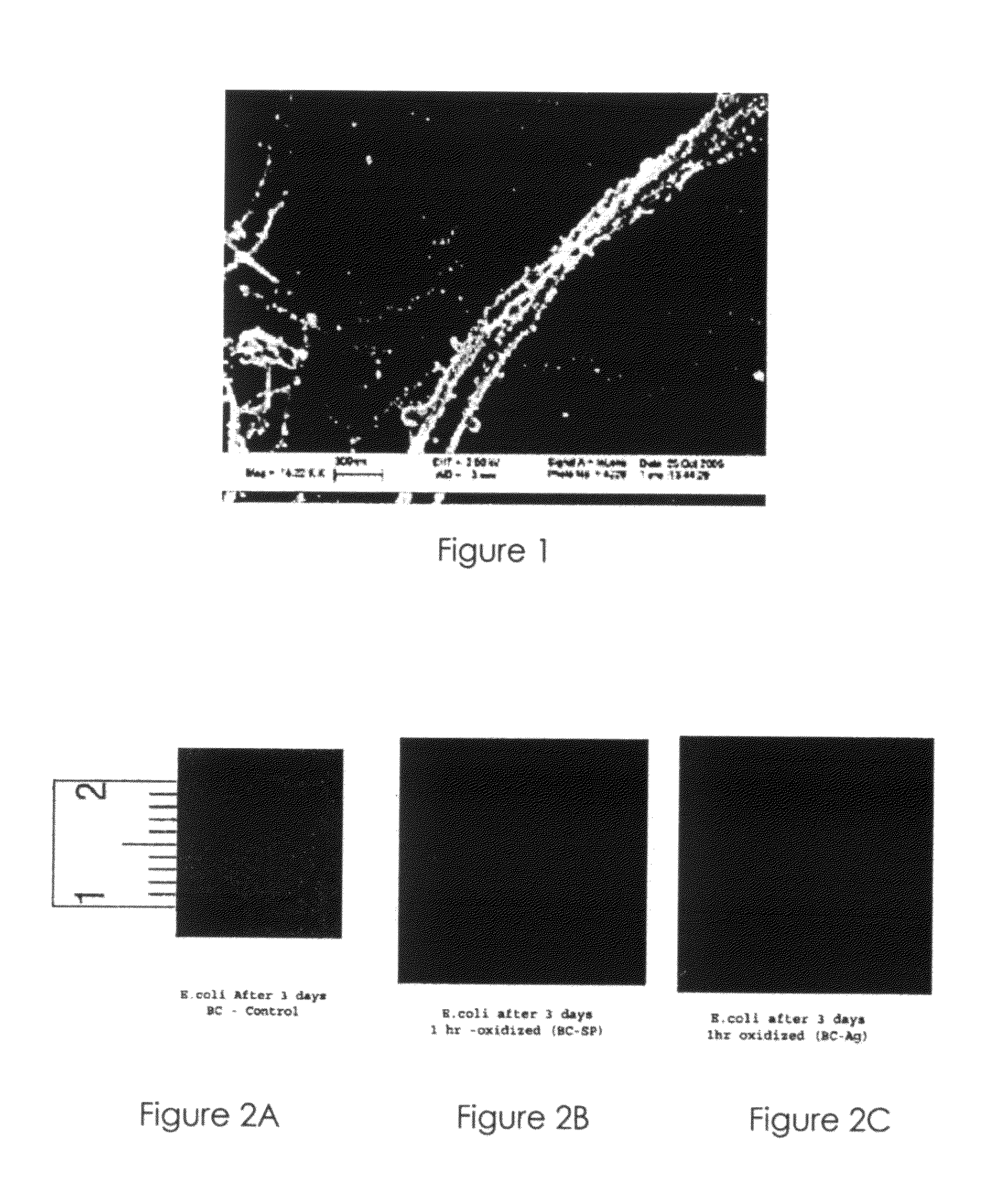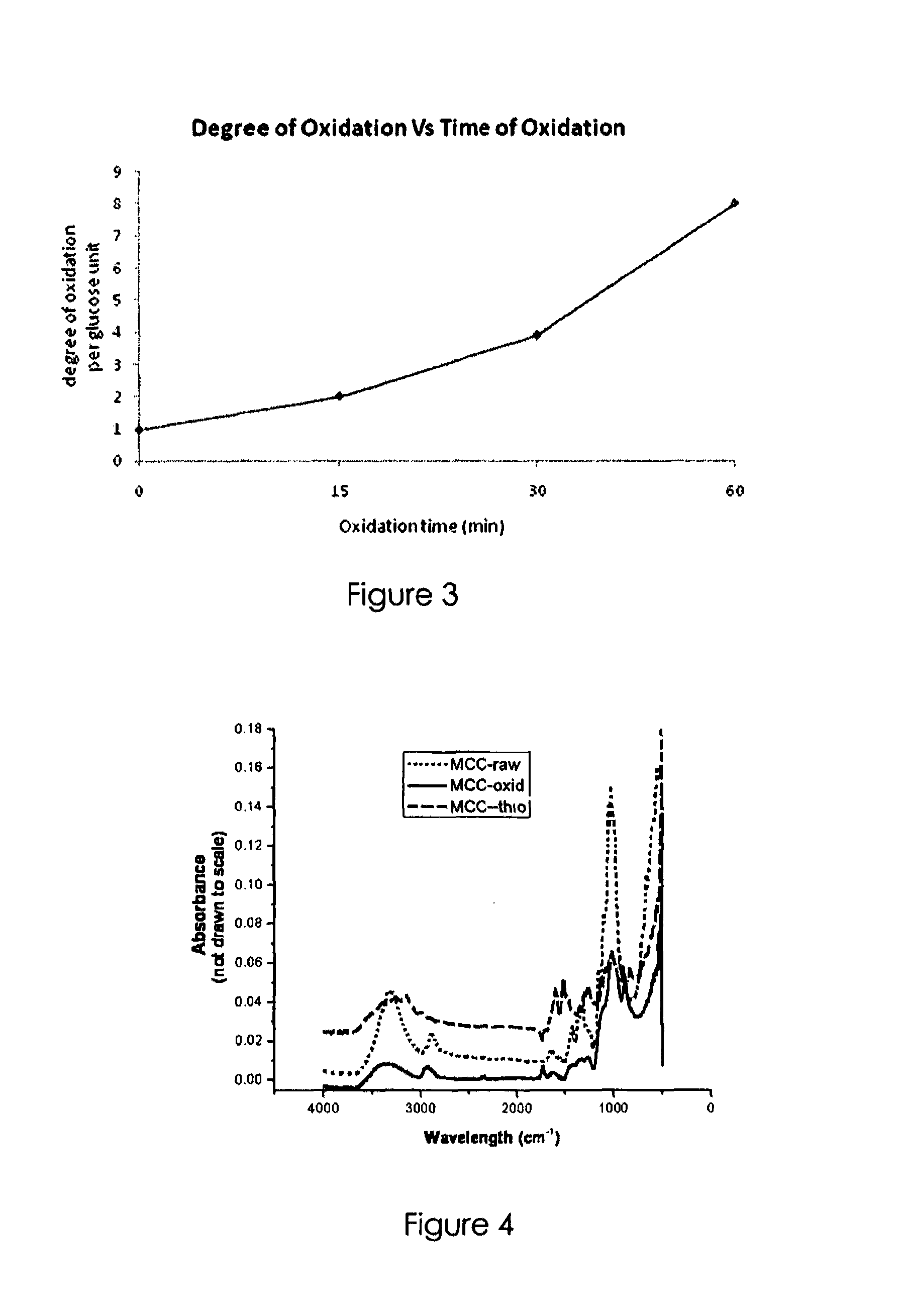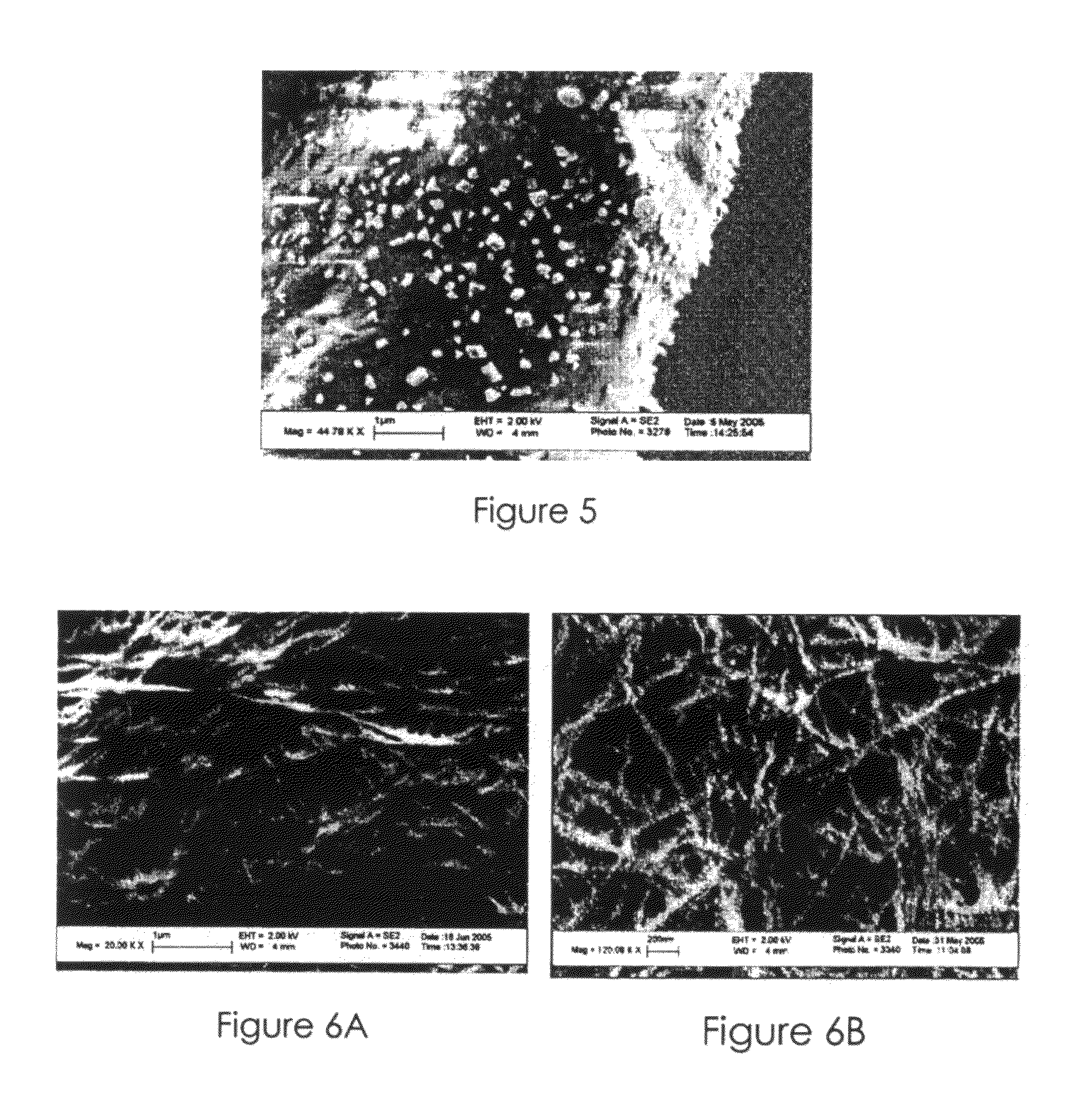Nanosilver coated bacterial cellulose
a technology of bacterial cellulose and naphtha, which is applied in the field of antibacterial materials, can solve the problems of poor antibacterial performance, incorporation of metals, and high cost of products
- Summary
- Abstract
- Description
- Claims
- Application Information
AI Technical Summary
Benefits of technology
Problems solved by technology
Method used
Image
Examples
example 1
Bacterial Cellulose Production
[0076]Bacterial cellulose was produced by fermentation using Acetobacter xylinum BPR 2001 in a media containing fructose (2% wt) and corn steep liquor (8% v) were used as the carbon and nitrogen source respectively as per Joseph et al. (2003) Journal of Chemical Technology and Biotechnology, Vol. 78, p. 964-970 and Guhados et al (2005) Langmuir, Vol. 21, p. 6642-6646.
[0077]The bacterial cellulose fibers were then subjected to 1% wt NaOH treatment for 30 min at 90° C. to lyse the bacteria and centrifuged to get pure cellulose, which is stored at 4° C.
example 2
Preparation of Dialdehyde Cellulose from Bacterial Cellulose
i) Freestanding Bacterial Cellulose Fibres Modified with Aldehyde Moieties:
[0078]5 mL of 0.36 wt % bacterial cellulose were oxidized with 0.16 M NaIO4 for 15 minutes, 30 minutes and 1 hour respectively. Zero (0) time oxidation refers to the control without any oxidation while the scheme of reaction remains unchanged.
ii) Films of Bacterial Cellulose Containing Aldehyde Moieties:
[0079]In the case of preparing films of dialdehyde cellulose (DAC), the resulting bacterial cellulose fibres from Example 1 were cast to form a non-woven sheet of bacterial cellulose with dry weight of 0.05 g, after which the films were oxidized using 25 mL of 0.16M NaIO4 at room temperature in the dark.
[0080]In both above cases, the oxidized product is dialdehyde cellulose (DAC) in fibre or film form which was recovered by washing in ethylene glycol and then washed with distilled water.
example 3
Thio-Incorporation onto the Bacterial Cellulose Matrix
[0081]The DAC thus obtained was mixed with 1% thiosemicarbazide (TSC) in 5% aqueous acetic acid. The mixture was kept at 60° C. for 90 minutes, after which the sample was washed and collected by centrifugation.
[0082]Films of dialdehyde cellulose from Example 2 was reacted with thiosemicarbazide through Example 3 to incorporate thio-groups to the cellulose backbone.
PUM
| Property | Measurement | Unit |
|---|---|---|
| diameter | aaaaa | aaaaa |
| diameter | aaaaa | aaaaa |
| size | aaaaa | aaaaa |
Abstract
Description
Claims
Application Information
 Login to View More
Login to View More - R&D
- Intellectual Property
- Life Sciences
- Materials
- Tech Scout
- Unparalleled Data Quality
- Higher Quality Content
- 60% Fewer Hallucinations
Browse by: Latest US Patents, China's latest patents, Technical Efficacy Thesaurus, Application Domain, Technology Topic, Popular Technical Reports.
© 2025 PatSnap. All rights reserved.Legal|Privacy policy|Modern Slavery Act Transparency Statement|Sitemap|About US| Contact US: help@patsnap.com



